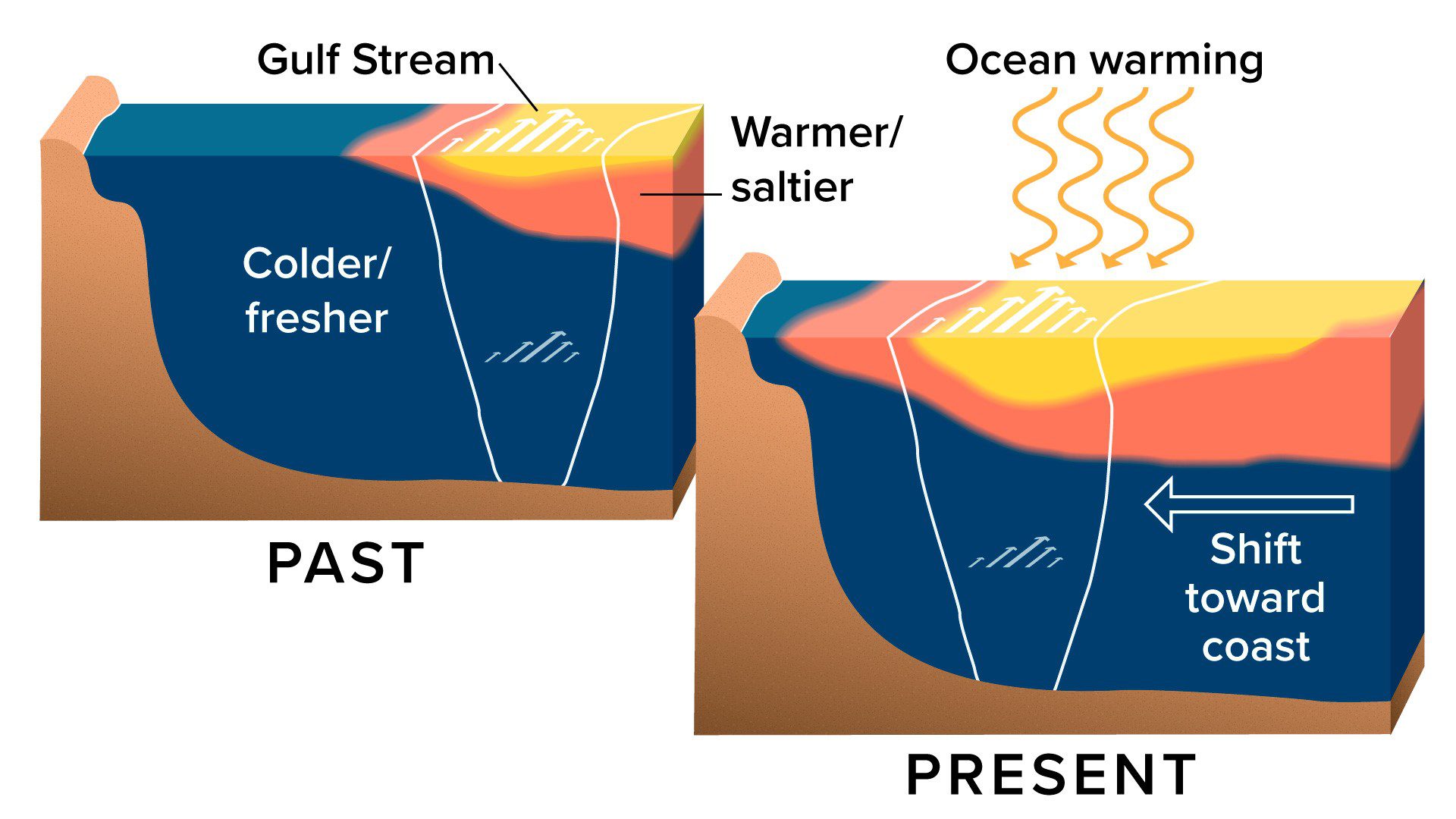
Since the turn of the 21st century, the Gulf Stream has warmed and gradually shifted closer to the US East Coast. To identify these long-term trends, Todd and Ren (2023) combined more than 25,000 profiles of temperature, salinity, and density collected with Spray autonomous underwater gliders and Argo profiling floats. The Gulf Stream region west of 68°W along the US East Coast has experienced surface-intensified warming due to heat uptake from the atmosphere at a rate exceeding that of the global ocean. At the same time, the Gulf Stream’s frontal structure has moved shoreward at a rate of about 5 km per decade. The study provides observational confirmation of a shift in the position of an oceanic western boundary current, which has been predicted by simulations of a warming climate. (Image provided by Robert Todd)
